
Leveraging Your Tools
By Matt Hemmele
In churches across the world there are events that happen large and small, big budget, small budget, or no budget. Though the events we execute and the resources available to us are different, the need to leverage tools to pull them off is something that we all have in common. Tools are often seen as physical objects; lighting, projection, microphones, staging…etc. However tools are also systems and processes that create effective avenues of communication, asset delivery, and review processes to catch mistakes. At Elevation, we are constantly doing events, both large and small, seen and unseen, that all require the leveraging of these tools. I thought it would be fun to do a case study on one of our events this year and highlight some of the tools we leverage to execute one of our flagship events.
Every year we do an event across all our campuses and online led by Pastor Holly Furtick for the women of our church called Reflect. There is an overall theme for the night that ultimately drives any creative staging or elements that we do. We brought in artist Hosanna Wong to do a spoken word piece that really fit with the heart of what “Reflect” is intended to be. We have done many spoken word elements over the years; at over seven minutes this was by far the longest spoken word element that we have ever done. Spoken word deliveries are challenging as you are wanting to support and complement the words being spoken, however not so much that you distract from those same words.
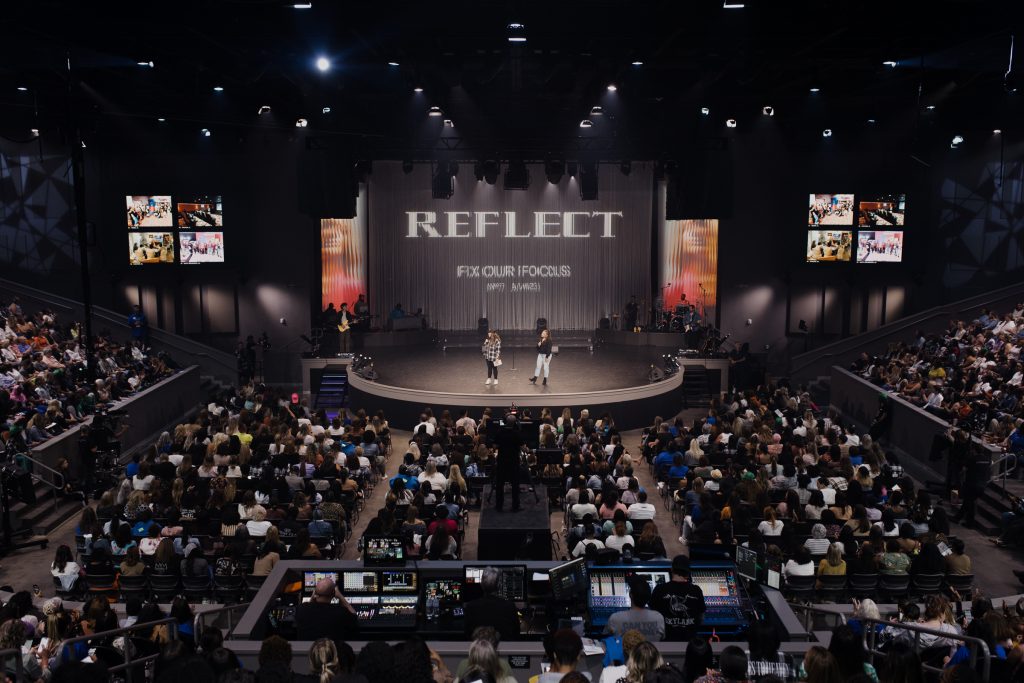
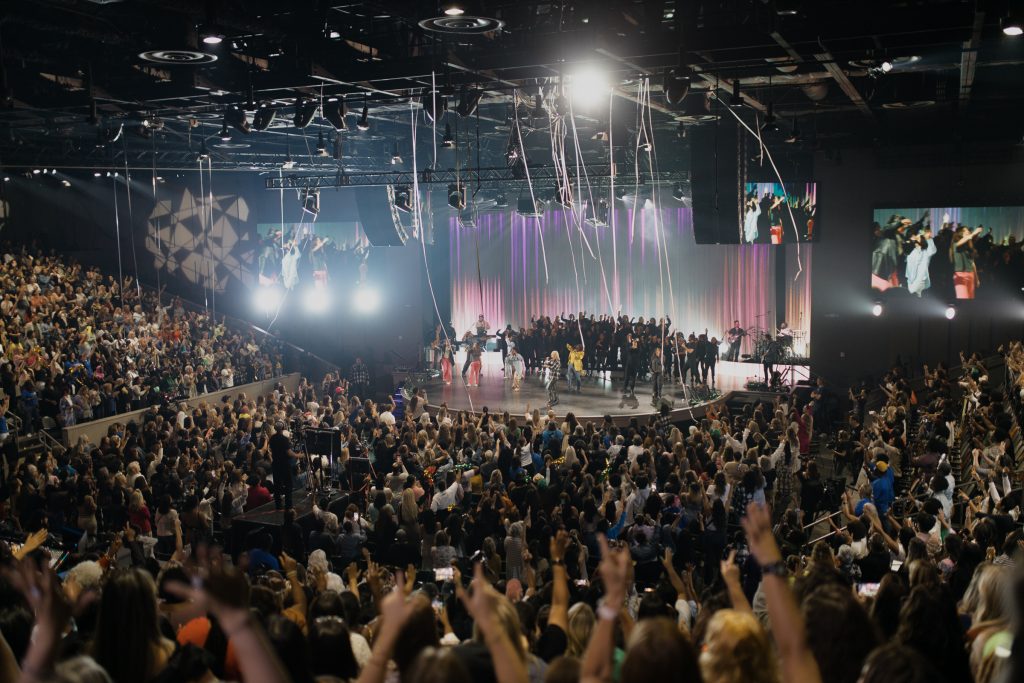
The Tools
Most every event we do at our church goes through four buckets of development:
- Design
- Organization
- Programming
- Execution
By pulling the tools out of these buckets we are able to move an event from concept to reality with a high confidence of planning and logistics, but also execution.
Design
We have found that when needing to change, alter, or insert something onto our stage, it is incredibly important to run the ideas through a design process. There are two main needs for this process. The first is having the ability to put hard numbers and geometry into a space to see if what is being proposed actually fits, or if we need to design a solution, in which case we would use Vectorworks Spotlight. The second is for us to have a photo realistic render of what the space will actually look like, in which case we would use Syncronorm Depence.
When going through this process it is important to recognize that not everyone is able to envision what the final product will be in their mind. It is my job to remove the “mind’s eye” guesswork out of the equation and show them exactly what we are setting out to create. This is also important because it is often the part of the process where we are figuring out how much something is going to cost. If we are asking for a high dollar amount, we can confidently present what that dollar amount will accomplish vs. saying “yea, but it will look good, I promise”.
During this process, it is somewhat easy to think about the load in, however good advice is “always be thinking about the out”. We may have several days to load in, however we may only have a few hours to load out, so inside of the design bucket, we are thinking about how to create a space that looks and feels different than our normal weekend but is the most efficient process to load in and out. It is not always realistic to spend three days loading in and then another day to load out. More likely, you can achieve the same level of impact with a much lower ask. In the case of Reflect, we were able to essentially hang fabric in front of our center screen as well as cover up our upstage scenic LED and refocus a few lights to create a stage that felt different. This is why design and visualization are so crucial to the process: it allows a virtual environment to workshop and play around with ideas and concepts before ever getting a quote or scheduling teams.
When it came time to start putting this event together, our live director came to me with the idea of utilizing a string curtain we already owned as a projection surface. The ultimate goal was to have a projection surface that was textured enough to break up the image, while also maintaining readability so that we could use the surface for not only the element, but as a centerpiece for the event in its entirety. To accomplish this textured look while also maintaining readability, we utilized two types of curtains from Rosebrand. We already owned a couple of string curtains, that surface was going to do the heavy lifting in breaking up the image and giving us an out of focus style. To maintain readability, we purchased a shark tooth scrim from Rosebrand that hung behind the string curtain. Layering those two fabrics as well as the overall size of the surface gave us a really impactful image that accomplished the goals we set out to achieve.


Organization
Along with the design process comes the need to aggregate quote, communication, scheduling, rental shipments to and from, as well as coordinating load in and load out details all in one place. There are three very simple tools that I cannot do a project without: Google sheets, Calendar, and Slack. I have used so many project management tools over the years, and quite simply, Google Sheets has been the best when it comes to putting in information, assigning tasks, dropping in patch lists and gear lists, as well as renders and drawings.
I live and die by my calendar, I don’t care if there is a master calendar, I will drop in my own events so that I know without a doubt what I have coming up, as well as being able to add people to those events as needed. This forces me to keep my head in the calendar when arranging for rental delivery and pick up times, teams needing to be on site, as well as knowing when or if I will have adequate programming time. Proper and accurate scheduling translates into accurate quote requests, the necessity of pre-viz programming, and ensuring we will have the proper number of people to load in the event.
The number one tension point in any project is communication, either a lack of it or having so many different avenues for communication that it becomes too scattered. Slack allows our church to communicate in one location utilizing either one channel for everything or for creating several channels for the same event under one umbrella. This allows us to communicate to everyone, but also give more specific details to specialized teams. For example, we had a “Reflect General” channel for all information relevant across all teams to be communicated; however we also had a “Reflect Hosanna Element” channel to relay information specific to the teams working on that element.

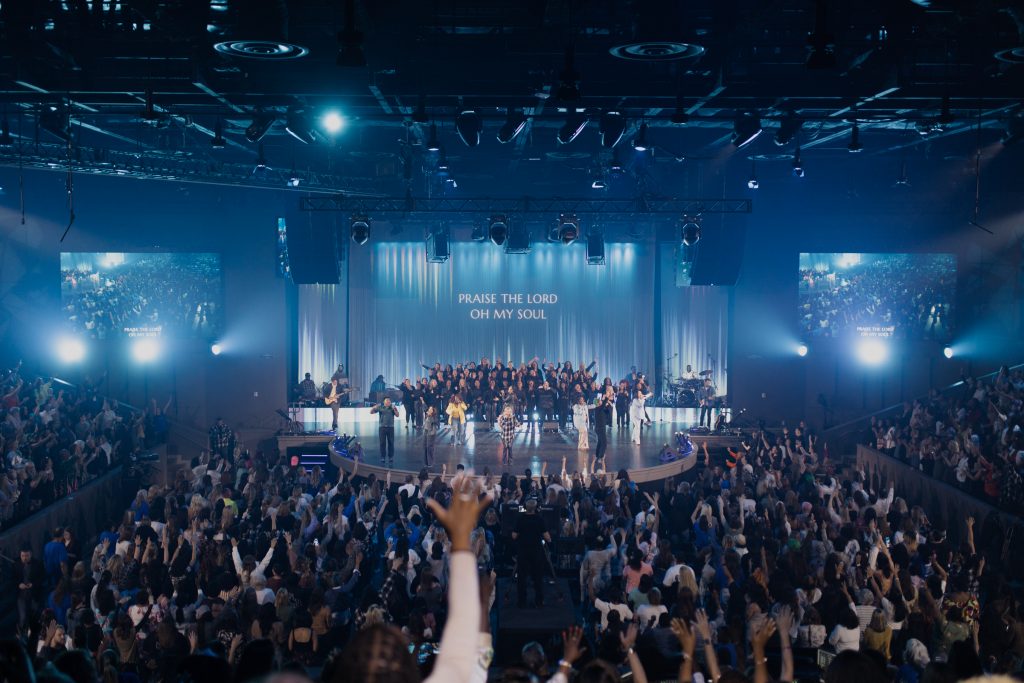
Programming
Up until you start to power up gear, everything that was pitched is still somewhat theoretical. Did we get the right lenses, are we routing the video correctly, did I think through power appropriately, do we have all the adapters we need, is this going to look like the picture? A better question is if I will I deliver on the promises I made about how it will look. All of those questions and the necessary processes are put to the test during load in and in the programming bucket part of our process. The right tool for the right job saves so much time and energy, and in our case Resolume has been an absolute legend of a tool for us especially when it comes to projection mapping.
We leveraged three Panasonic PT-RQ35KU projectors rented from our friends at Nationwide Video. If you are ever in need of projection, I highly recommend these units. They are the same size as a 20K but with 30k output and all the features you come to expect from Panasonic. When we fired these projectors up, right out of the gate we were blown away by just how bright they were while covering a 40’ x 25’ area – they instantly became our new standard for our projection needs. In the design portion we decided on utilizing four of our mini roll drums from Rosebrand to use as two additional surfaces on either side of the center projection. This gave a really nice and complete look that complimented the overall theme of the night. We let Resolume do the heavy lifting when it came to mapping the projectors, which allowed us to throw the projectors up quickly and rough them into the general direction they needed to hit and fly them up.
With the overall theme being a linear broken up lens-type style, I knew that I was going to be leveraging the shapers in our Ayrton Diablo fixtures. The general story arc of the element was chaos and brokenness into finding wholeness and identity in God; how to translate that with lighting was an incredibly fun and challenging process. My strategy was to create “pieces” out of each fixture, utilizing the shapers getting them sort of square, but imperfect then taking those “pieces” and creating spaces on the stage that gave a nod to what was being spoken. By the end of the element I wanted to ensure the fixtures were functioning as one complete unit as a nod back to the words being spoken. Coupling the fixture capabilities with GrandMA3, we were able to quickly and efficiently create the environment that this element would live in.

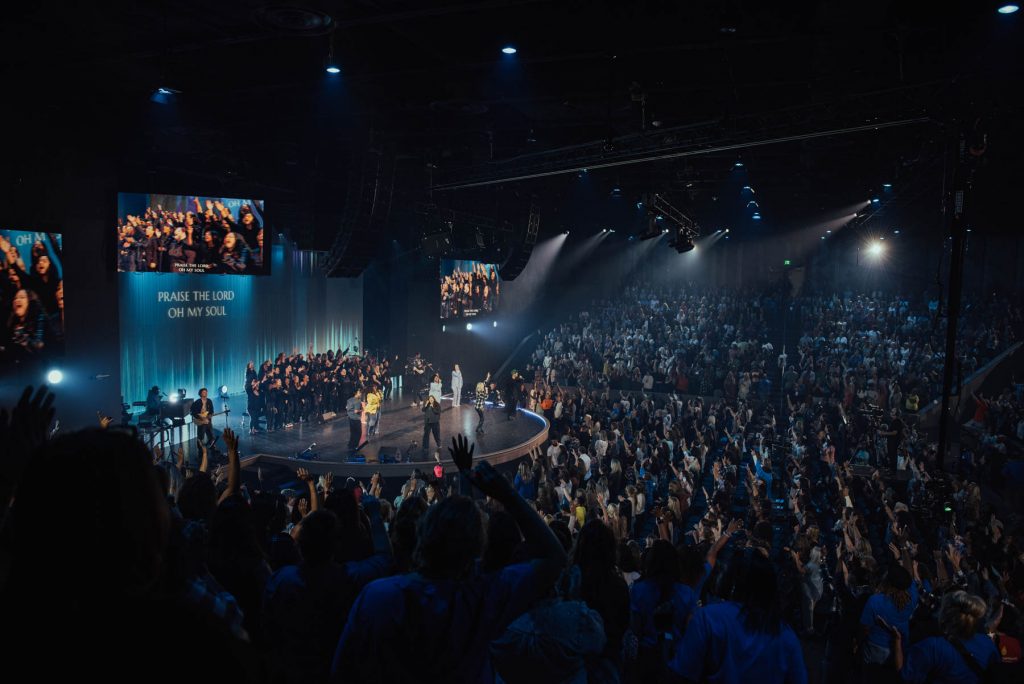
Execution
It takes the precise orchestration of a small army of staff and volunteers to execute an event of this scale along with the added complexity of offering not only a unique creative element, but also utilizing different technologies to support that element. I cannot stress the importance of rehearsal. Every aspect of an event needs to be rehearsed; the camera shot, the lighting cue, the audio transition, firing graphics, bringing assets out on stage, striking risers, transitional elements, videos, even down to calling in bringing out water. For this orchestration to happen it requires clear and clean communication across multiple party lines as well as more granular com channels. For this we looked to ClearCom Eclipse system, as well as a communication etiquette when using these channels.
Along with communication, another critical component of ensuring all teams have what they need to execute the tasks they have been assigned is to have a clear system for asset delivery. There are times that we find a typo, need to make a change to a graphic, or need to change an edit in a video, so having a clean and clear way to not only deliver files, but ultimately knowing where those files get delivered so that they can be pulled in quickly and deployed to our playback systems is imperative.
Execution of an event is oftentimes the most important aspect of the process, however the ease and efficiency of carrying out an event is directly related to how thorough the other steps of the process are.
The Conclusion
Overall we were really happy with where the look of Reflect landed, how impactful the element was, and that we were able to create a very unique feel that was so different from our weekend experience. Oftentimes after a big event it is easy to move onto the next thing and not evaluate the systems and tools that were used; however, it can be valuable to take stock of all the different bits and pieces it takes to pull off whatever the task is. Additionally, it is important to evaluate the misses so you can improve not only the tools, but also the systems and processes. In regard to Reflect, we had a lot of teams working on this event, both before, during and after, there was a lot of valuable insight into how systems are working and what needs to be improved.
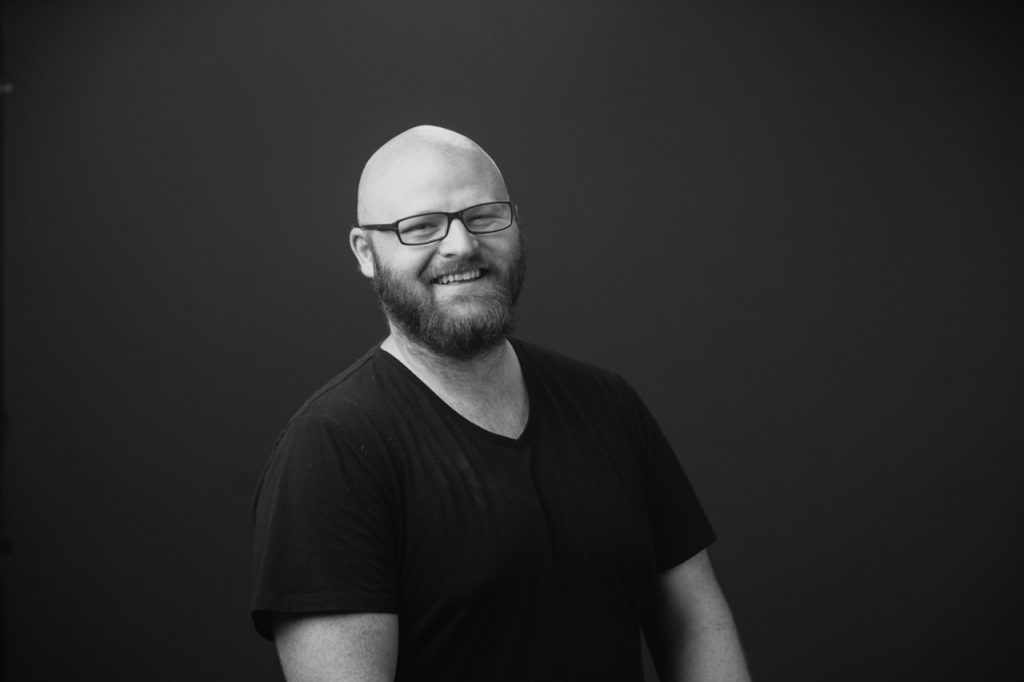
Matt Hemmele, I have been doing production in the church for 16 years, specializing in lighting. In 2007 Matt attended an arts conference at Willow Creek and was given a picture of what lighting design could look like within the church. Since then, he spent 15 years working within the church, 10 years spent at a church in his hometown, Peoria, IL. In 2017Matt and his wife moved to Charlotte, NC to be a part of Elevation Church, where he have spent the last five years learning, growing, developing, and being a part of all that God is doing in Charlotte and around the world. It has been an absolute dream, getting to do lighting for such an incredible ministry.






